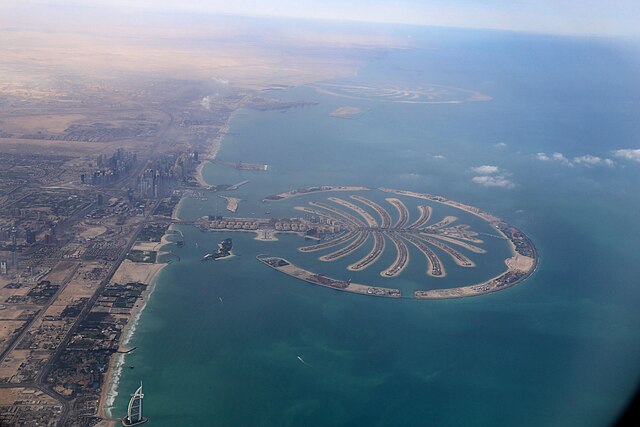The Palm Islands consist of three artificial archipelagos: Palm Jumeirah, Deira Islands, and Palm Jebel Ali, on the coast of Dubai, United Arab Emirates. The Palm Islands were constructed around the same time as The World Islands. Nakheel Properties is the Palm Islands real estate developer. The creation of the islands began in 2001 and ended around 2006/2007. These islands have significantly impacted ocean sediment and wildlife in the surrounding area.
Palm Islands, aerial view
The Palm Jumeirah seen from the International Space Station.
An artificial island is an island that has been constructed by humans rather than formed through natural processes. Other definitions may suggest that artificial islands are lands with the characteristics of human intervention in their format process, while others argue that artificial islands are created by expanding existing islets, constructing on existing reefs, or amalgamating several islets together. Although constructing artificial islands is not a modern phenomenon, there is no definite legal definition of it. Artificial islands may vary in size from small islets reclaimed solely to support a single pillar of a building or structure to those that support entire communities and cities. Archaeologists argue that such islands were created as far back as the Neolithic era. Early artificial islands included floating structures in still waters or wooden or megalithic structures erected in shallow waters.

The Flevopolder in the Netherlands is 970 km2 (375 sq mi) and is the largest island formed by reclaimed land in the world.
Reef Island off North Malaita
Dejima, not allowed direct contact with nearby Nagasaki
1927 sea wall pilings from the failed Isola di Lolando construction project in Miami Beach, Florida






